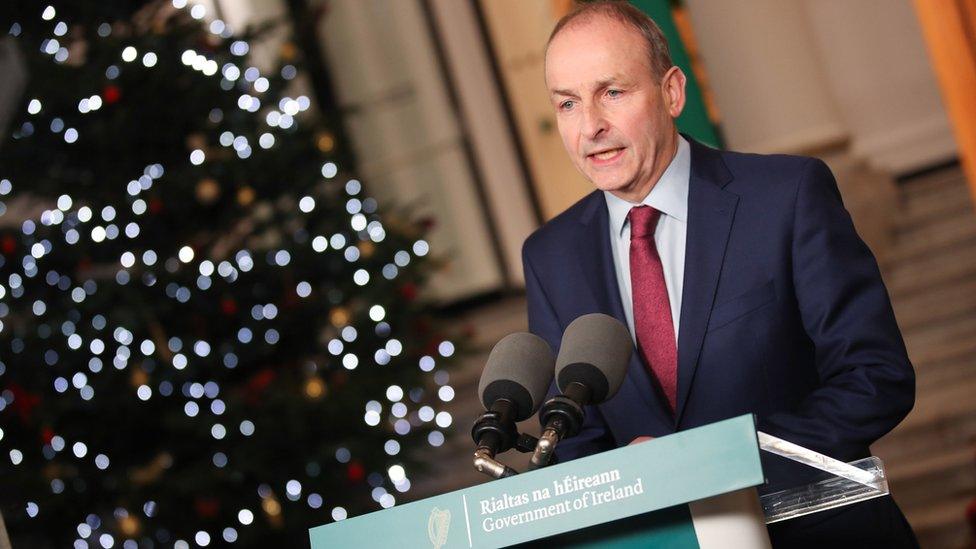Covid-19: Infections remain high in NI but fewer inpatients
- Published
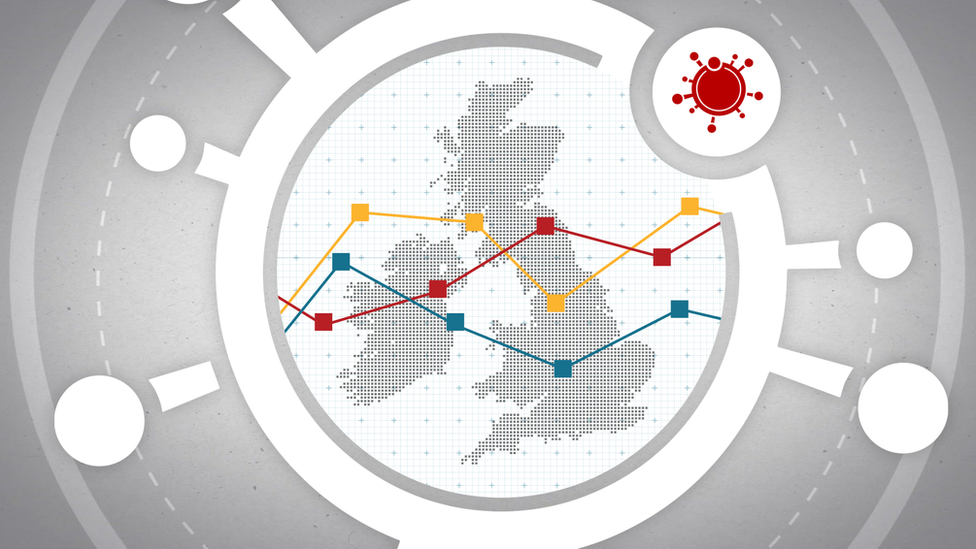
A new word entered the coronavirus lexicon over the past week - Omicron.
The latest variant was given the Greek letter by the World Health Organisation (WHO) a week ago.
Northern Ireland is currently the only part of the UK yet to have a confirmed case of the new variant, while the Republic of Ireland confirmed its first case on Wednesday.
It will take scientists some time before they can answer key questions about it.
Questions have been raised about the new variant's transmissibility and potency, and to what degree current vaccines are effective against it.
It is almost certain to be a case of 'when' and not 'if' this new variant comes to Northern Ireland.
In the meantime, countries across Europe are taking different approaches because of increasing case numbers.
Austria introduced mandatory vaccination two weeks ago, while Germany is to ban unvaccinated people from certain places unless they have recently recovered from the virus.
Taoiseach (Irish Prime Minister) Micheál Martin announced new restrictions for the Republic of Ireland - with nightclubs to shut and stricter rules for hospitality settings.
Deputy First Minister Michelle O'Neill said there were no plans to introduce increased restrictions in Northern Ireland, external before Christmas Day.
But what do the numbers tell us about the pandemic in Northern Ireland right now?
Cases and infection rates
Northern Ireland's number of positive cases - and therefore its infection rate - remains high.
We have the highest infection rate in the UK - still by quite some margin.
Here are the latest infection rates per 100,000 population based on UK government data for the week up until November 28:
England - 442.5
Scotland - 326.8
Wales - 483.8
Northern Ireland - 607.6
The Republic of Ireland's for the same period was 622.
This represents a small increase in infection rate, while Northern Ireland's rate fell slightly over the last week.
But again, the difference between north and south is negligible.
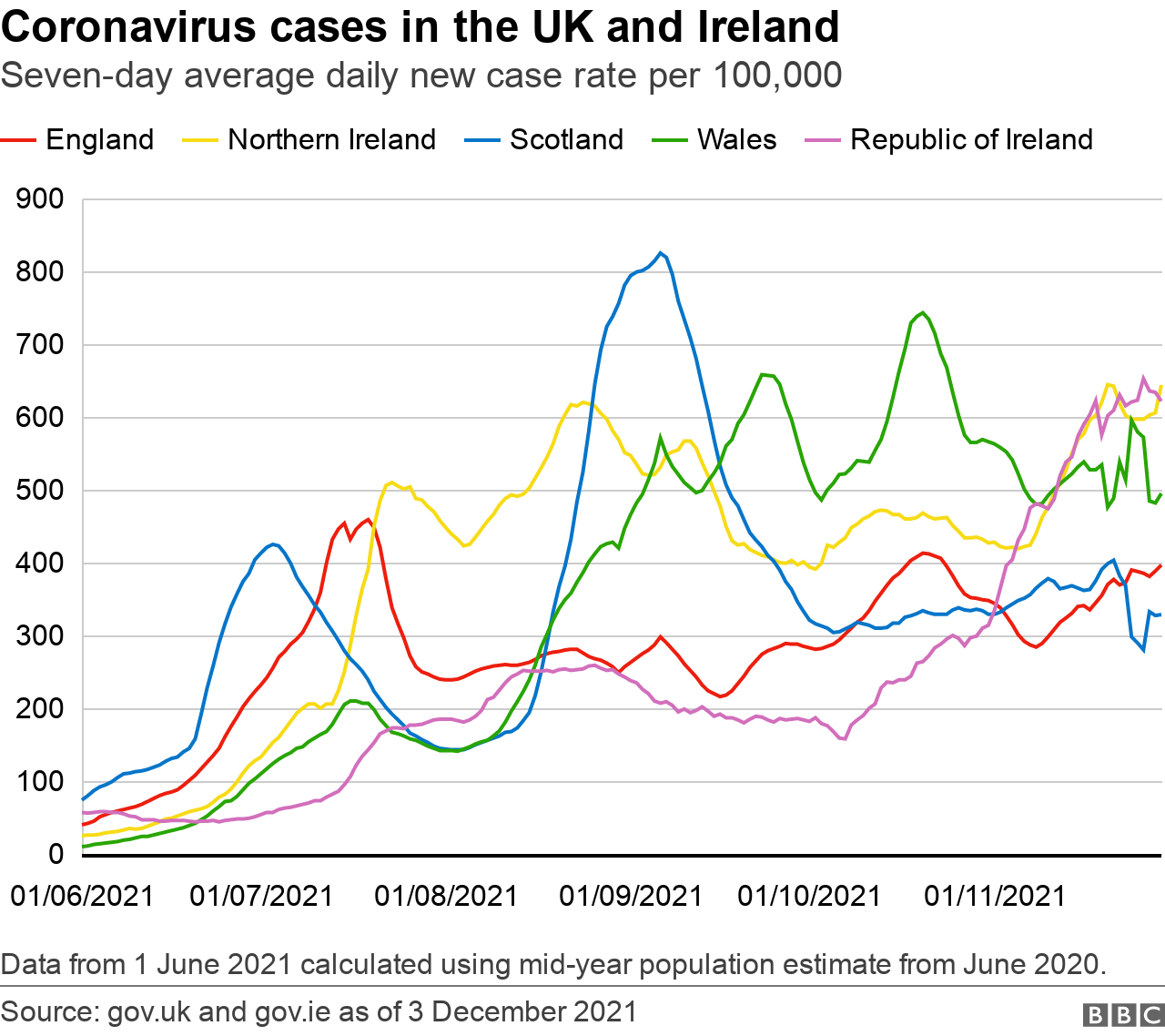
Over the past seven days 112,474 people in Northern Ireland were tested for Covid-19.
This is a massive number - meaning that on average about one in every 17 people in Northern Ireland had a Covid test in the space of a week.
There were 12,426 positive cases, giving a positivity rate of 11% - one in nine people tested turned out to have the virus.
Northern Ireland's rolling seven day average for the number of cases is now almost as high as it has ever been at any point in the pandemic.
The latest number on the Department of Health dashboard for this rolling average is 1,775.
The highest during the pandemic so far has been 1,846 - which was at the very peak of the surge we saw at the turn of the year.
The figure on the Department of Health (DoH) dashboard - through necessity - runs a few days behind.
Given that we have seen some high numbers for positive cases on individual days at the end of the week, this average will certainly rise.
And this is important - the rolling average gives a much better picture of the trend in case numbers than any day-to-day figure.
In short, this average shows that the numbers of people getting the virus right now in Northern Ireland are akin to the winter peak 11 months ago.

However, there is a key difference. And it's not a good one.
In January we hit a high in case numbers, but we went very quickly into that peak - and quite quickly out of it.
This time around, it's been a case of months of prolonged high numbers of infections.
The case numbers rose in July. They dipped a bit, but stayed high, between mid-September and Halloween. Since then, those numbers have been rising reasonably steadily.
The following is a simple - but effective - way of illustrating the high level of Covid infection in Northern Ireland over the past few months.
Using UK government data, these are the average daily cases in Northern Ireland for the 11 complete months this year (rounded down to whole numbers):
January - 937
February - 299
March - 156
April - 96
May - 80
June - 161
July - 961
August - 1,452
September - 1,247
October - 1,207
November - 1,524
To reiterate - it's a simple, arbitrary way of expressing an undeniable truth.
That transmission of coronavirus in Northern Ireland increased dramatically in July, has stayed at high levels, and has started to increase.
That's the bad news.
The key question is how this increased caseload is affecting the health service.
Hospitalisations
This is where there may be some cause for hope.
With the rising infection rate a few months ago, we started to see more and more people in hospital with Covid-19.
For three months from mid-August to mid-November, there were usually between 400-500 Covid-positive people in hospital in Northern Ireland.
This has started to change.
The decrease in inpatient numbers has been reasonably steady for long enough to indicate a general trend.
The inpatient number is getting closer to 300 (currently 326), and while it still represents about 10% of the hospital population, it's a welcome development.
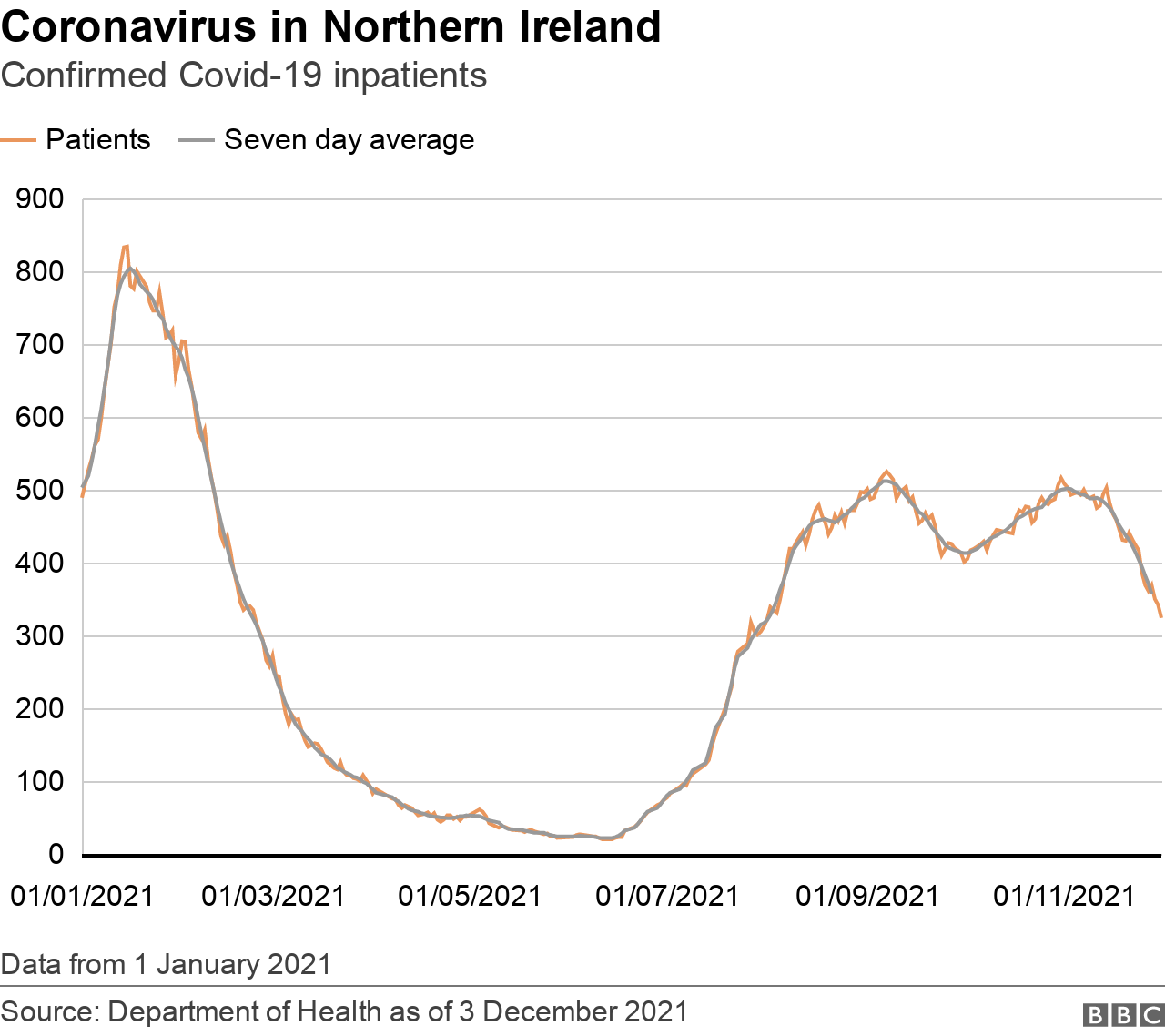
The profile of the decrease is important here - in that we have seen drops right across the age groups.
This means that fewer older people (those most at risk from the virus) are ending up in hospital with Covid-19.
There could be a few reasons for this.
People under the age of 20 have been accounting for about 40% of new infections.
They are unlikely to end up requiring hospital treatment.
On the other end of the scale, vaccination (especially the booster) is likely to be helping keep our older population safer.
The admission numbers indicate another reason to be hopeful.
Over the past week they have fallen to a level that's similar to mid-July, before Northern Ireland's case numbers started to increase dramatically.
It's very early days - and it should be remembered that usual winter pressures will undoubtedly play their part - but those lower admission rates should mean an ongoing decline in inpatient numbers.
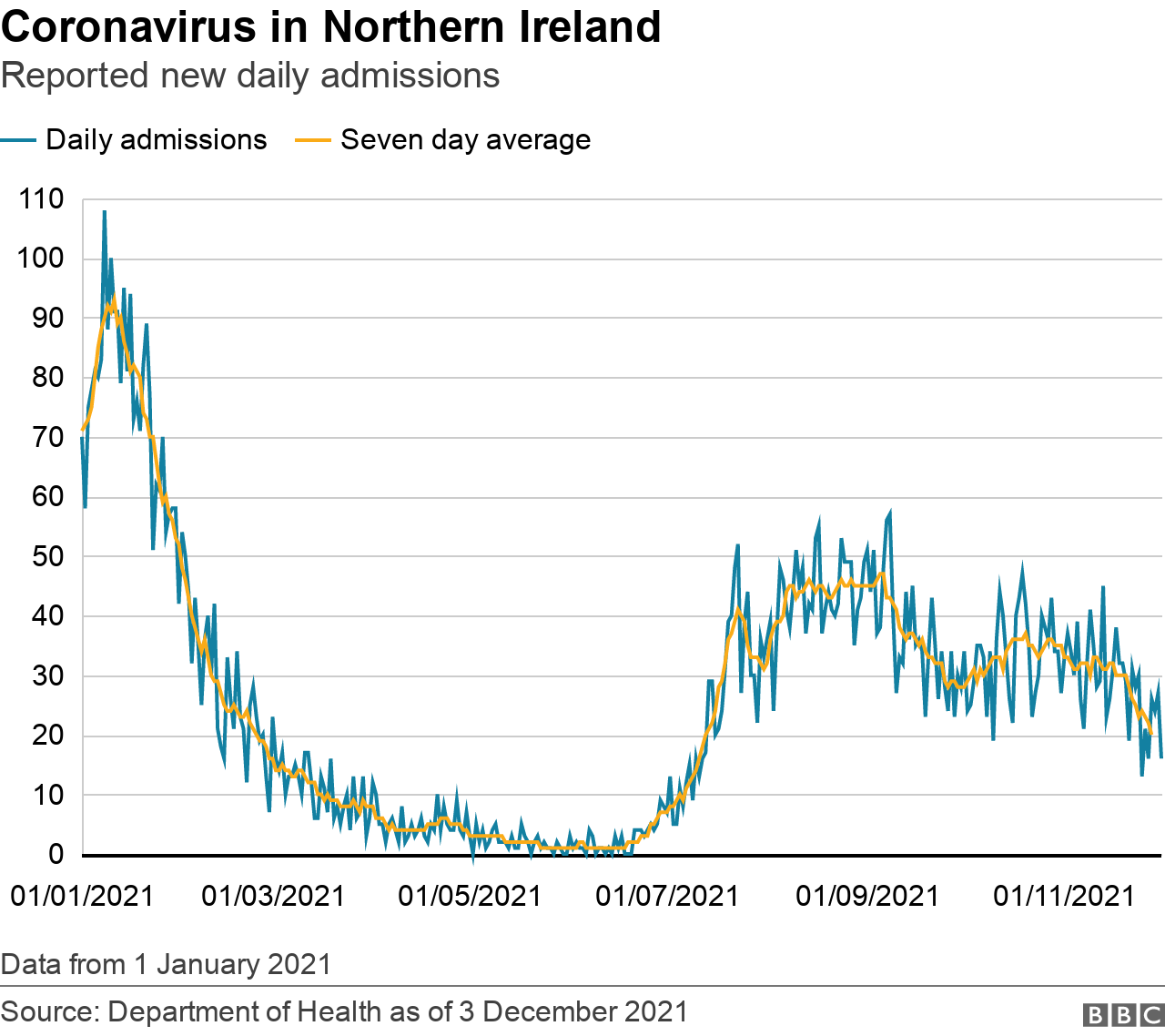
Thirty people with the virus are in intensive care units across Northern Ireland.
Twenty-eight of those are ventilated, requiring help to breathe.
These numbers have been fairly consistent for a number of weeks.
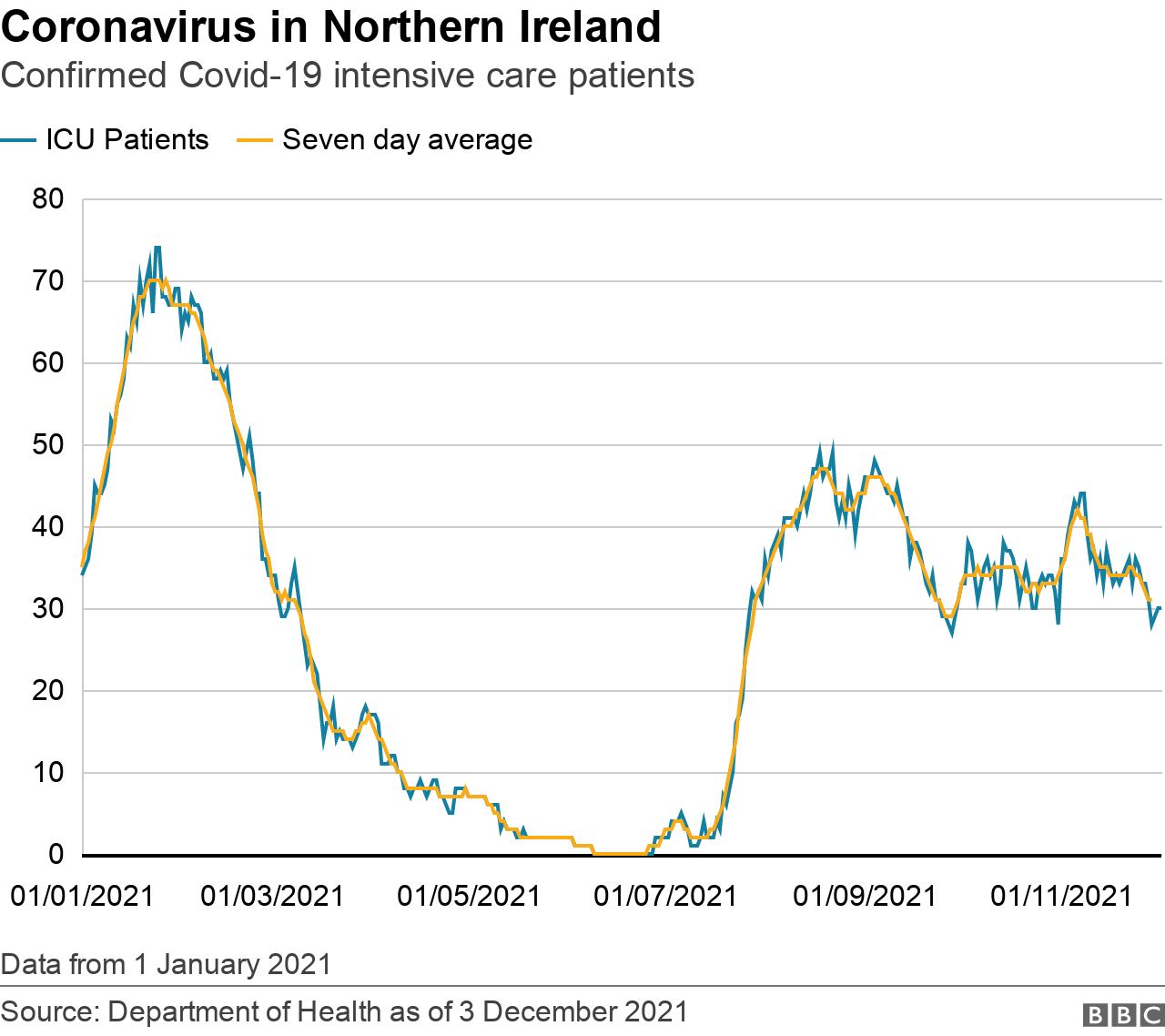
All of this is not say that our health system isn't under pressure. It is.
And the figures that bear that out are those which deal with the capacity of Northern Ireland's hospitals.
For about seven months now, we have routinely had more people in hospital than we have beds.
Deaths
It's a mixed picture when it comes to Covid deaths in Northern Ireland.
The latest figures from the Northern Ireland Statistics and Research Agency (Nisra) indicate a rise in the number of Covid-related deaths.
The latest figures from the Department of Health (DoH) indicate a fall in the number of Covid-related deaths.
However, both can be true.
Firstly, Nisra's figures take in the week up until November 26, while the department's go up until December 3.
Secondly, both authorities count the death rate in different ways.
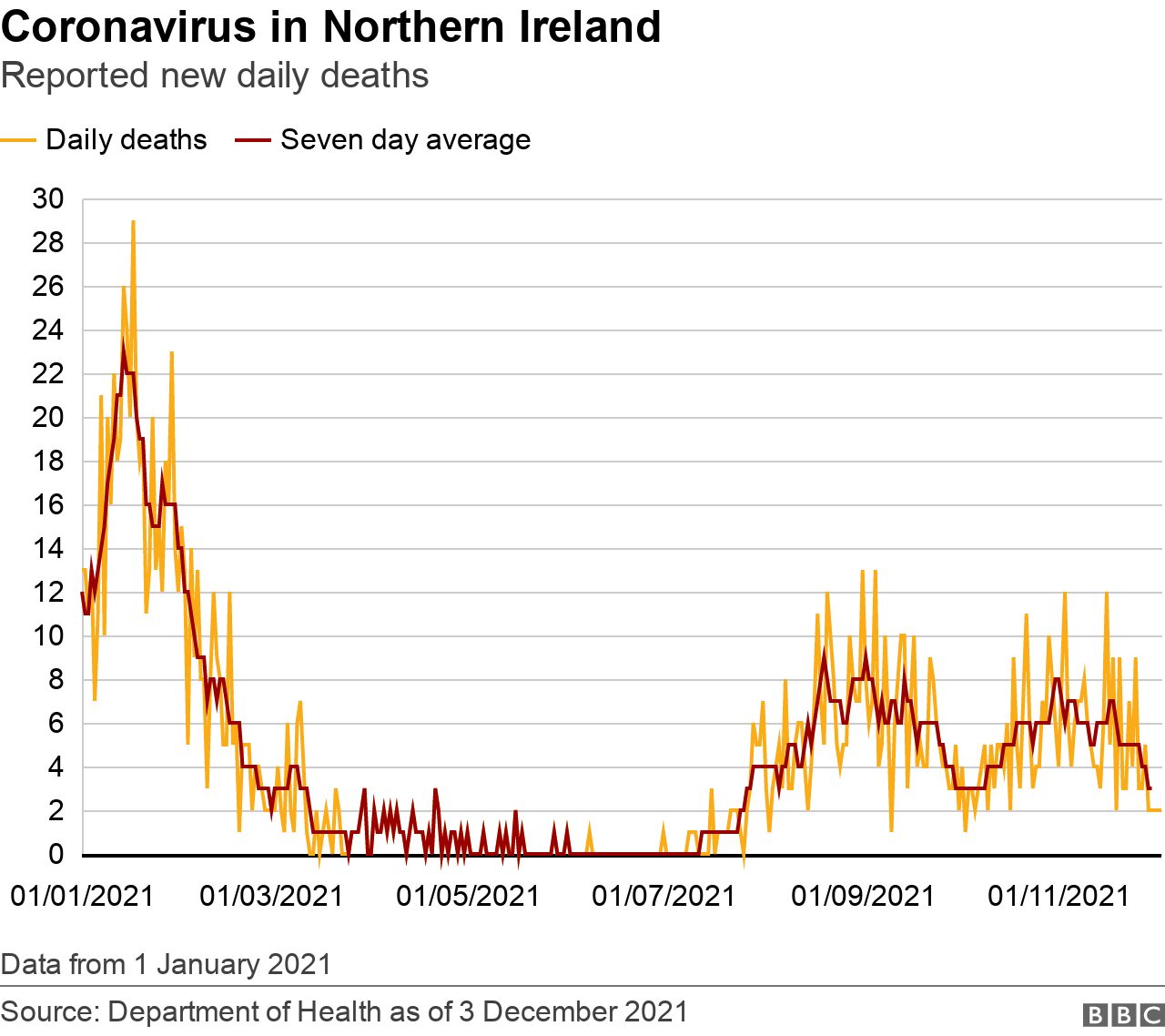
Nisra counts the death certificates on which Covid is mentioned.
The DoH counts deaths which occur for any reason within 28 days of a positive Covid test.
The seven-day rolling average death rate as published by the DoH is now three.
This represents a steady decline for the past two weeks and is at its lowest level for nearly two months.
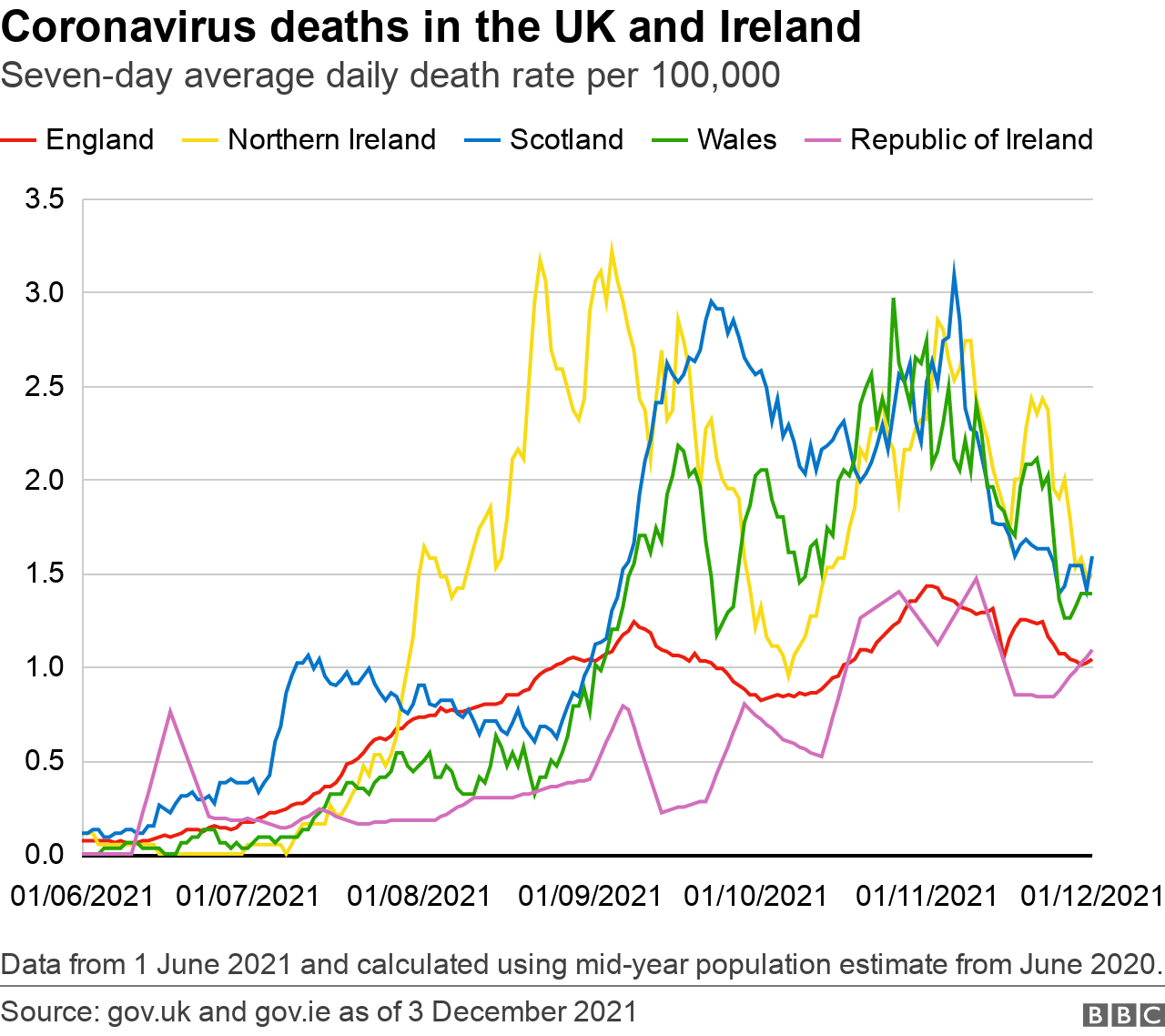
Vaccinations
The approach to booster vaccinations changed across the UK during the past week.
A number of vaccination clinics opened in Northern Ireland to help deliver more booster doses.
Northern Ireland stills lags behind the rest of the UK in terms of the number of booster doses delivered.
But that gap is closing.
And it will probably close quicker with the new clinics up and running.
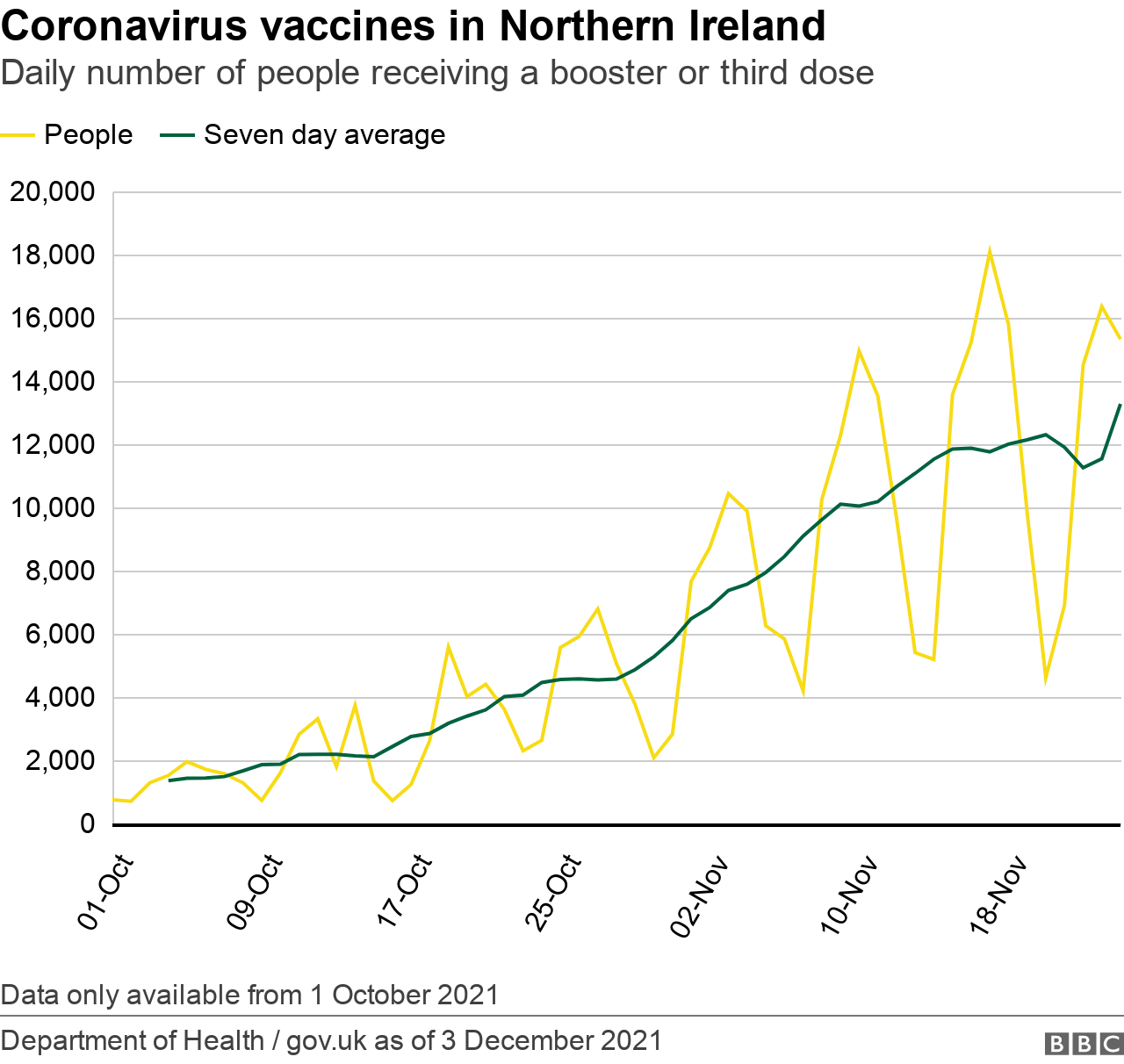
The following is the percentage of the population aged 12+ to have had a booster dose (UK government figures):
England - 33.6
Scotland - 37.4
Wales - 34
Northern Ireland - 27.3

It should be noted that according to the same UK government figures Northern Ireland has given about 1% of its 12+ population a booster dose each day over the past week.
This represents a considerable and impressive increase in pace.
There has also been a noticeable increase in first dose vaccinations in Northern Ireland over the past two weeks.
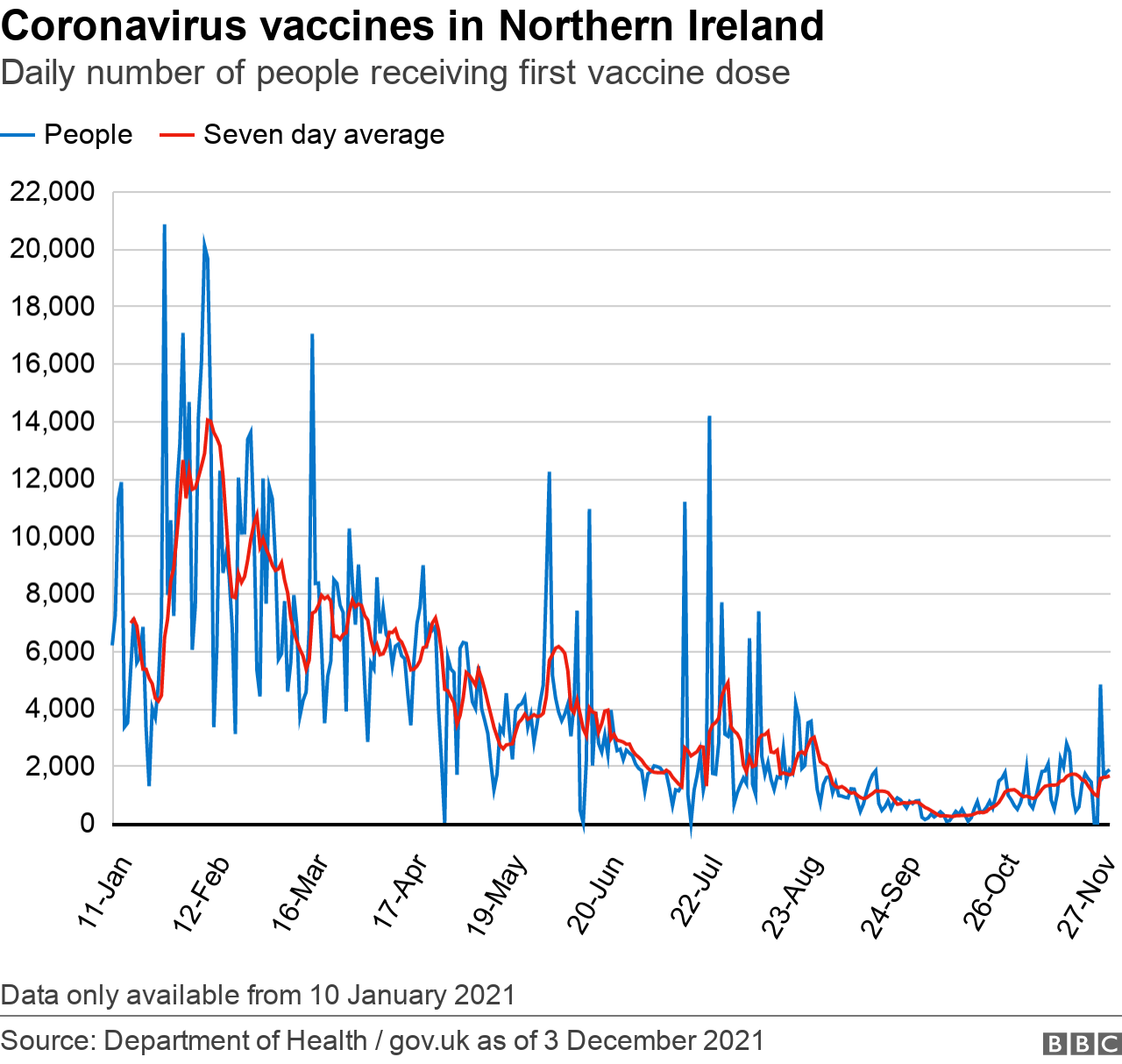
During November, Northern Ireland delivered first doses at a much higher rate than anywhere else in the UK.
This was evident before the announcement about vaccine passports, but increased again afterwards.
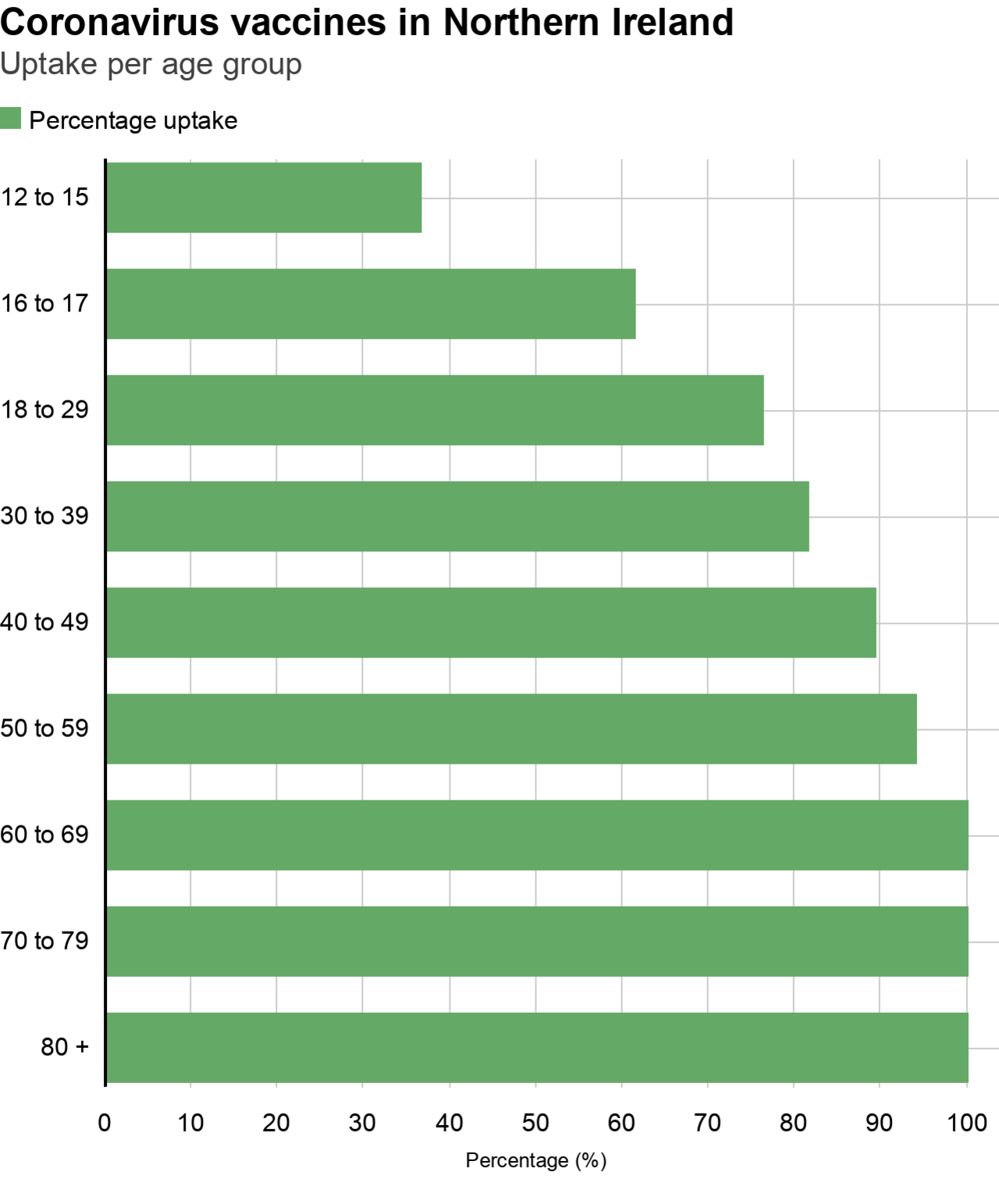
Regardless of the reasons behind these recent increases in vaccination in Northern Ireland, health authorities will be glad to see these figures.
The statistics still point to the vaccination programme as being key in the battle against the virus.
Related topics
- Published3 December 2021
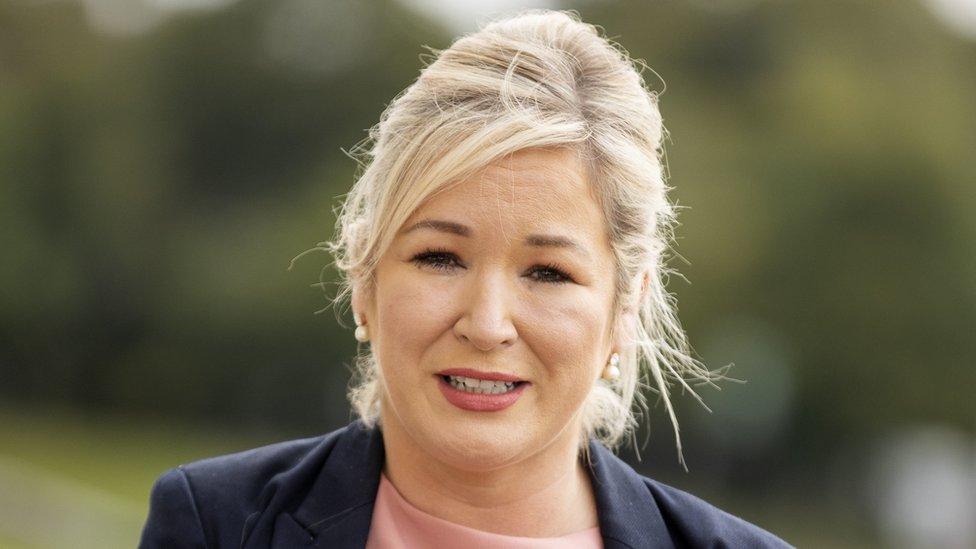
- Published26 November 2021
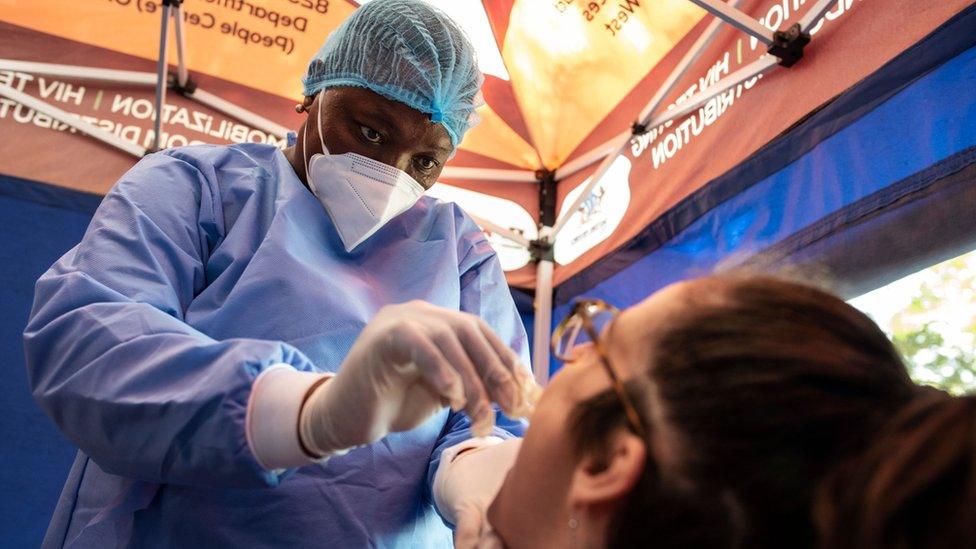
- Published1 December 2021

- Published3 December 2021
